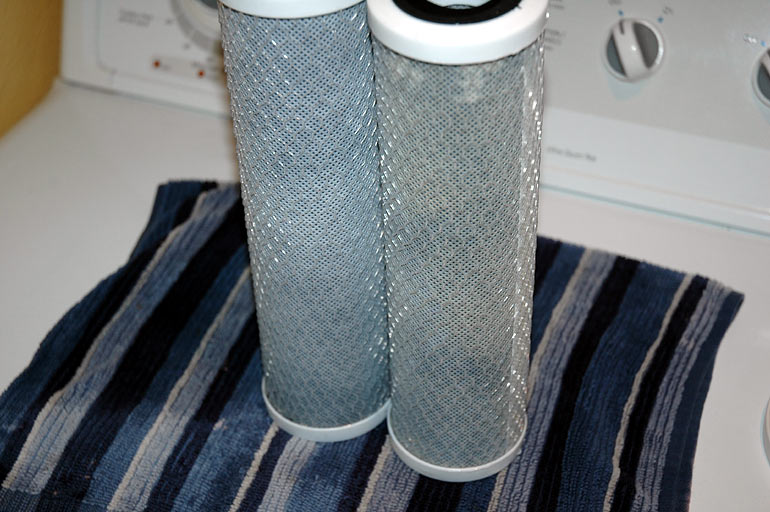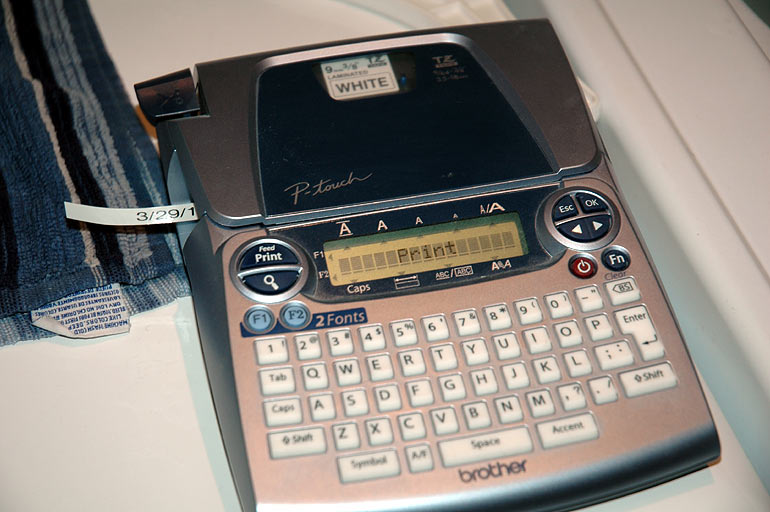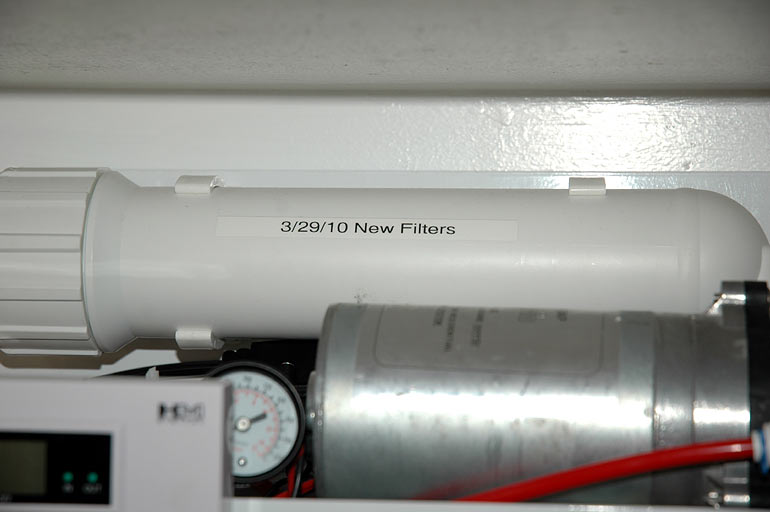Time to change your RO/DI filters?
by
, 03-29-2010 at 04:40 PM (6855 Views)
Is it time to change your RO/DI filters? I date my system each time they are changed out, to help me keep track. They should be changed every six months, so I'm actually a month late in doing so. Whoops. However, the TDS reads zero, so there's no reason to worry, right?
Wrong.
After turning off the water source and opening the valve after the system to bleed off the pressure within, I removed the prefilter set (sediment & two carbon cartridges). After removing the middle carbon, which is the first in line after the sediment, smell it. If it seems strongly of chlorine, it has done its job in protecting the membrane. It'll smell like a properly maintained swimming pool, basically. Changing these filters out like clockwork will extend the life of the membrane, since chlorine eats away at it.
If your area's water has chloramines, one of the best defenses is 20" of carbon and 20 minutes of contact time. To achieve that, you need two 10" carbon filters and a 75gpd membrane. That works out timing-wise. If your first carbon is spent, the second one won't last much longer. Another reason to change these out regularly. You can purchase a chloramine test kit and measure the water after the filters prior to the membrane to determine the carbon lifespan, or err on the side of caution and change them out more frequently if you wish.
Looking at these two carbons, note how the right one is yellowing. That's to be expected - it was, after all, the one that reeked of chlorine.
Here's the prefilter set, which I sell in my Reef Shop.
The new filters were installed, and the water turned back on to flush out the system of air and the first burst of water for a few minutes. Because of the way my system is set up, the DI resin doesn't get wasted. I make drinking water from a Tee fitting prior to the DI section.
If your spouse has a label maker, use it. If you don't have a spouse, buy one. LOL
The label maker lets you date when bulbs need changing, media has been replaced, or filters installed. You can mark gear under your tank or in your fish room for when you need to leave your reef to a tank sitter during a vacation away from home.
Label the RO/DI system with the new date, and you're done.
The DI will be changed when the TDS begins to rise, probably around 5ppm. For now, it continues to read zero, so there's no reason to waste it/replace it.


















